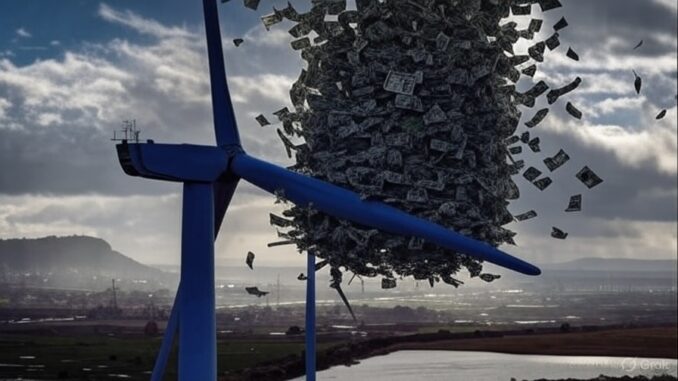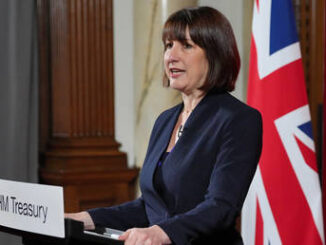
In a year marked by aggressive pushes toward net zero emissions, Britain’s energy sector has hit a staggering milestone: over £1 billion (approximately $1.3 billion) spent in 2025 alone to pay wind farms to curtail production and switch off turbines.
This eye-watering figure, driven by grid constraints and oversupply, underscores the hidden inefficiencies in the UK’s renewable energy rollout. As wind power capacity surges, the national grid struggles to keep up, leading to “constraint payments” that compensate operators for lost revenue when they can’t feed electricity into the system. But is this peculiar to Britain, or a global norm? And what does it mean for everyday consumers footing the bill?
The Mechanics of Constraint Payments in the UK
Constraint payments aren’t a new phenomenon, but they’ve ballooned in 2025 amid record wind generation and inadequate transmission infrastructure. When wind farms—particularly those in windy Scotland—produce more power than the grid can handle or transmit south to high-demand areas like England, operators are instructed to reduce output. In return, they’re paid based on what they could have earned, often at inflated rates tied to subsidies and contracts.Data from the National Energy System Operator (NESO) shows that by October 2025, these payments had already topped £1.157 billion, with projections suggesting the total could climb toward £1.8 billion by year’s end.
Seagreen, Scotland’s largest offshore wind farm, alone received £65 million in 2024 to curtail 71% of the time, a trend that’s persisted into 2025.
Critics, including Octopus Energy’s CEO Greg Jackson, have labeled this a “racket,” where billpayers subsidize wind farms for not producing energy.
Energy Secretary Ed Miliband has faced backlash, with some pointing out that these costs are a direct result of rushed renewable expansion without matching grid upgrades. This isn’t just about turning off turbines—it’s a symptom of a mismatched system. Britain’s wind capacity has grown rapidly, but bottlenecks in transmission lines, especially the Scotland-England interconnector, force curtailments. In extreme cases, gas plants are even paid to ramp up while wind is shut down, adding irony to the green transition.
Is This Normal Across Global Markets?
Curtailment—deliberately reducing renewable output due to grid limitations or oversupply—is indeed a growing reality worldwide, especially where wind and solar dominate without sufficient storage or transmission.
Average curtailment rates for wind and solar hover around 3% globally, but they’re rising in key markets.
In California, for instance, the ISO curtailed 2.4 million MWh of utility-scale wind and solar in 2022, a figure that’s only increased as capacity expands.
Germany and Australia have seen similar spikes, with curtailment becoming “the norm” in 2024 and projected to continue into 2025.
In markets like Spain, solar curtailments are expected to become routine during spring oversupply periods, driven by rapid PV growth outpacing grid capabilities.
Payments for curtailment vary: In the US, it’s often handled through market mechanisms like negative pricing, where producers pay to offload power or voluntarily curtail.
But in subsidized systems like the UK’s, guaranteed payments make it more lucrative to build capacity even if it’s frequently idled. Globally, the lack of affordable large-scale storage exacerbates this—without batteries or pumped hydro to absorb excess, curtailment is the go-to solution. While some argue it’s cost-effective compared to immediate grid expansions, others see it as wasted potential, increasing reliance on fossil backups and hiking emissions.
The Cost to Consumers: Building Capacity That’s Paid to Sit Idle
The real sting comes for consumers. These constraint payments are ultimately passed on through higher electricity bills, adding to the “hidden costs” of renewables.
In the UK, NESO estimates curtailment costs could reach £8 billion by 2030, directly inflating household expenses.
When additional nameplate capacity (the maximum output rating) is built—often encouraged by subsidies—only to be consistently paid to shut off, it creates a cycle of inefficiency. Developers overbuild to maximize subsidies, but the grid can’t integrate it all, leading to more curtailments and higher system costs. Globally, studies show that high curtailment reduces the economic value of renewables by forcing backup from pricier sources like gas peakers.
In regions with aggressive renewable targets, this can paradoxically raise wholesale prices during low-production periods, offsetting the low marginal costs of wind and solar.
For consumers, it means paying twice: once for building excess capacity and again for compensating it not to run. Proponents claim renewables still drive down overall prices through merit-order effects, but critics highlight that levelized cost of energy (LCOE) figures ignore these integration expenses, making the “cheap” renewables narrative misleading.
In essence, without massive investments in storage and transmission—estimated in the trillions globally—these costs will keep climbing, burdening ratepayers while environmental gains stall.
The Absurdity in Scotland: Diesel Generators to “Turn On” Wind Farms?
Adding fuel to the fire—literally—is the ongoing scandal in Scotland, where wind farms have reportedly used diesel generators not just for backup, but in ways that raise eyebrows about subsidy gaming. As highlighted in discussions on Energy News Beat, operators have deployed diesel units to “fire up” turbines during calm periods, ostensibly to maintain operations or de-ice blades, but critics argue it’s to qualify for capacity payments or subsidies tied to availability rather than actual output.
This irony—burning fossil fuels to support “green” wind power—exemplifies the flaws in incentive structures. In one case, millions of trees were felled for wind developments, only for diesel to bridge the gaps, all while taxpayers foot the bill.
Such practices aren’t isolated; they reflect a broader issue where subsidies prioritize installation over integration. Scotland, with its high wind potential, leads in UK curtailments, with payments hitting £380 million in recent years.
As ENB has pointed out, this “renewable reckoning” questions the viability of wind and solar without addressing these absurdities.
A Wake-Up Call for Energy Policy
Britain’s £1 billion-plus payout to idle wind farms in 2025 isn’t just a number—it’s a symptom of a rushed transition ignoring grid realities. While curtailment is increasingly normal globally, the UK’s payment model amplifies costs, passing them straight to consumers amid overbuilt capacity. Add in bizarre diesel dependencies in Scotland, and the picture is clear: Without prioritizing storage, transmission, and smarter incentives, the net zero dream risks becoming a costly nightmare. As 2025 draws to a close, policymakers must confront these inefficiencies, or risk eroding public support for renewables altogether.
Got Questions on investing in oil and gas? Tis the season for Tax Prep







